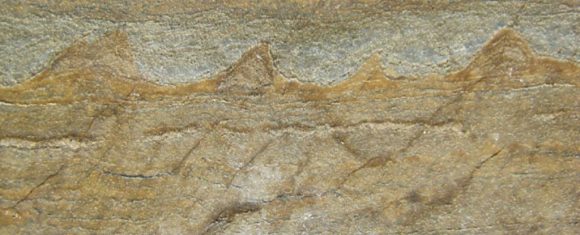The question how life began on Earth has always been a matter of profound interest to scientists. But just as important as how life emerged is the question of when it emerged. In addition to discerning how non-living elements came together to form the first living organisms (a process known as abiogenesis), scientists have also sought to determine when the first living organisms appeared on Earth.
In a new study by a team of Canadian researchers, the question of when life emerged on Earth is constrained using two approaches. By combining astrophysical and geophysical evidence with biosignatures in geological samples, they estimate that life emerged roughly 200 to 800 million years after Earth became habitable (ca. 3.7 billion years ago). This study could have drastic implications for our understanding of life and how long it takes to emerge on Earth-like planets.
The study which describes their findings was recently published in the journal Astrobiology under the title “Constraining the Time Interval for the Origin of Life on Earth“. The study was led by PhD student Ben K. D. Pearce, and included several of his colleagues from the Origins Institute and Dept of Physics and Astronomy at McMaster University in Hamilton, Ontario.

For the sake of their study, Pearce and his colleagues sought to create a timeframe for when life emerged on Earth. As noted, they considered astrophysical and geophysical evidence on the one hand, and biosignatures in geological samples on the other to construct boundaries for both. As Pearce explained to Universe Today via email:
“There are two boundaries that demarcate the time interval for the origin of life, and to constrain each boundary requires different types of evidence. The habitability boundary is constrained by astrophysical and geophysical evidence, e.g., the timescale of the Moon-forming impact, and the cooling of the Earth’s magma mantle. The biosignature boundary is constrained by various biosignatures, suchas microfossils, stromatolites, and carbon-13 signatures.”
Based on the astrophysical and geophysical evidence, the team was able to place the habitability boundary for Earth between 4.5 and 3.9 billion years ago. They were able to constrain the biosignature boundary more closely, placing it at around 3.7 billion years ago based the presence of both stomatolites and light carbon signatures in graphite globules of sedimentary origin.
The difference between these two boundaries therefore provides us with an idea of how long it took for early life forms to have emerged. “The evidence suggests it took life 200–800 million years to emerge on Earth, which is a relatively short period of time considering the planet has been habitable for 4.5–3.9 billion years, and will remain habitable for about a billion more,” said Pearce.

While this study has significant implications for the study of life here on Earth, it is not yet applicable to extra-solar planets. While estimates of how long it takes for life to emerge on a planet like our own may become useful when investigating “Earth-like” exoplanets someday, our knowledge of extra-solar planets and systems is currently too limited. As Pearce indicated:
“Unfortunately we can’t really use a study of the time interval for the origin of life on Earth as a guide for the search for life on exoplanets, as we are a sample size of n=1. We have no idea whether life took longer to emerge on Earth than on a typical habitable world, or shorter, or whether life emerged anywhere other than the Earth.”
However, as Pearce added, this review is very useful in terms of guiding our understanding of the origin of life on Earth. “For example, 200 million years may be a necessary amount of time for chemical synthesis to explore the large, random, nonfunctional biopolymer sequence space. Only after this long ‘searching and waiting period’, could a small stable group of replicators perhaps have been established on the early Earth.”
In the coming years, next-generation instruments will allow for the characterization of exoplanets like never before. With additional research, scientific estimates of when life could have emerged on various Earth-like exoplanets may become available. Until then, it is comforting to know that we are getting closer to determining how and when life emerged on Earth.
Further Reading: Astrobiology

